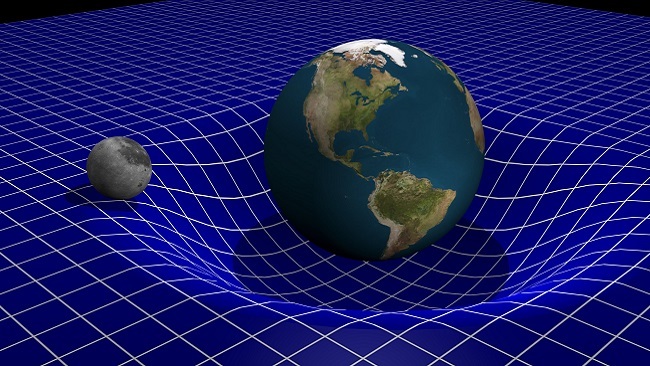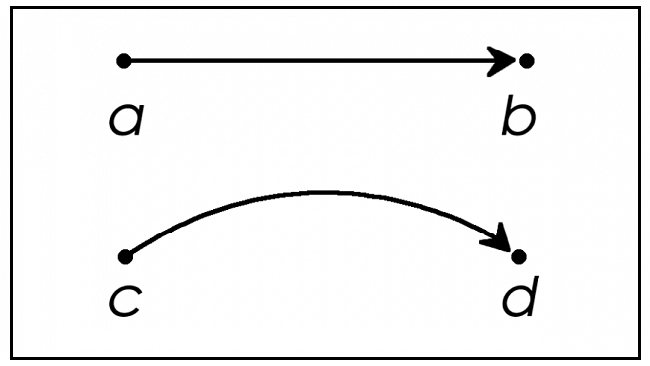A time travel is a concept that foresees the possibility of moving between different points in time (past or future).
Although the idea seems fanciful and is often related to fiction, a lot of scientific evidence demonstrates that time travel is, with the right technology, possible. For this reason, several renowned scientists have already dealt with the subject, such as Albert Einstein, Stephen Hawking, Carl Sagan, etc.
Fundamentals of time travel
The main fundamentals of time travel are based on Theory of relativity of Einstein, which represented a milestone in modern physics. In general terms, the Theory of Relativity consists of a set of studies that demonstrate an interdependent relationship between time and space, as well as the consequences arising from this relationship.
For Einstein, the universe is arranged in a kind of fabric called Space time, formed by three spatial dimensions (width, height and depth) and a temporal dimension, which is time. Any celestial body “weighs” in this fabric, forming a curvature in space-time that affects all nearby bodies. This curvature is responsible for several effects such as gravity, rotational movements and, consequently, differences in the perception of time.

The curvature formed in space-time by the Earth's mass causes gravitational effects on the moon, which starts to translate around the Earth.
Einstein also understood that time, like speed, it is not an absolute quantity, but a relative one.. These conclusions were strongly based on Newton's Laws, which understood that the speed at which a body moves is never absolute and must always be analyzed through a frame of reference. As an example, the same train can move at 40 km/h in relation to a stationary reference frame, and only at 20 km/h in relation to a reference frame that moves in the same direction as it.
The same concept of relativity used in the example must be applied to the speed of the Earth, the sun and the entire Milky Way.
Time Travel Theory
Based on the concepts of spacetime and relativity, check out the most popular theories in science about time travel:
time dilation
Time dilation is a concept inserted in Einstein's Theory of Relativity, according to which the time, like speed, is not absolute, but relative according to the frame of reference. adopted.
Time dilation can occur in two ways: through the difference in speed between the two observers or by the difference in gravitational influence that falls on each of them (dilation gravitational time).
time dilation by speed
Speed time dilation (or just time dilation) is a theory that predicts the possibility of journey to the future if humanity obtains the means to travel through space at speeds closer to that of the light.
For physicist James Clerk Maxwell, the speed of light is exactly the same (approximately 300,000,000 m/s) regardless of the reference frame adopted. This idea, which is in direct conflict with Newton's Laws, would imply the following scenario: an observer stationary and a moving observer would see the light arrive from point A to point B at the same time, without any relativity.
Einstein's conclusion was that the only way the two laws could coexist would be if time itself slowed down for the moving observer, giving rise to the concept of time dilation.
Theory has proven that the faster an object moves through space, the slower it moves through time. This idea was proven through experiments carried out on the International Space Station. International Space Station - ISS), in which it was noted that, after 6 months, the clocks on board the station have moved 0.007 seconds slower than clocks on Earth.
Based on this evidence, it is possible to assert that, even on a tiny scale, astronauts who return from the International Space Station to Earth after 6 months have traveled 0.007 seconds to the future.
International Space Station, in orbit since 1998.
This difference over time is believed to increase as the speed of a body approaches the speed of light. The theory is often illustrated through the Gemini's Paradox (or Langevin's Paradox), which consists of a thought experiment in which a man remains in space in a spaceship that is moving at great speed. When he returns to Earth, his twin brother is decades older, while he himself barely aged.
Gravitational dilation of time
Gravitational time dilation is a theory that predicts the possibility of future travel if humankind obtains the means to travel to planets whose gravitational force is far greater than that of the Earth.
Gravitational dilation occurs through the influence exerted on an observer by a celestial body of great mass. The larger the celestial body, the greater the curvature in space-time and consequently the greater the gravitational influence around it. In other words, time passes more slowly where gravity is strongest.

Time will pass slower on the clock located closer to Earth compared to the clock farther away.
Based on gravitational dilation, time will be slowed down for an observer located closer in the gravitational field than for an observer farther away. This hypothesis has already been proven through atomic clocks placed on satellites located at different altitudes. Eventually, the clocks began to diverge, albeit in nanoseconds.

Basis of the difference in the passage of time between clocks. Due to the existing curvature between C and D, light takes longer to reach between one point and another.
It is believed that if it were possible to travel to a planet whose gravitational influence was much greater than that of the Earth and return, the traveler would have traveled to the future since time would have passed much faster in the Earth.
wormholes
Wormholes are hypothetical phenomena that consist of tunnels that interconnect different points of space-time. Although extremely improbable, the Theory of Relativity considers the existence of transposable wormholes valid, that is, those with conditions to be traversed from one side to the other.
In theory, wormholes would work not only as shortcuts to other points in space, but also to other points in time, including the past.

Visual representation of a wormhole. It is believed in the existence of wormholes whose exit is located in the same universe and at different moments in time.
Cosmic Strings
According to astrophysicist J. Richard Gott, cosmic strings are sorts of tubes of energy that stretch across all of spacetime like cracks. The phenomenon is hypothetical and is considered a topological defect that occurred during the formation of the universe.

Visual representation of cosmic strings, theoretically present throughout space-time.
Gott believed that cosmic strings would be thinner than an atom and, like black holes, would have huge quantities of concentrated mass, resulting in an extremely strong gravitational field capable of distorting the Space time.
In theory, the distortion created by two cosmic strings close together (or a cosmic string stretched close to a black hole), would cause an impact capable of bending space-time, forming a closed time curve, through which an object could reappear at any point in time, including the past.
See too:
- Black Hole
- Theory of relativity
- Astronomy
- Temporal paradox
